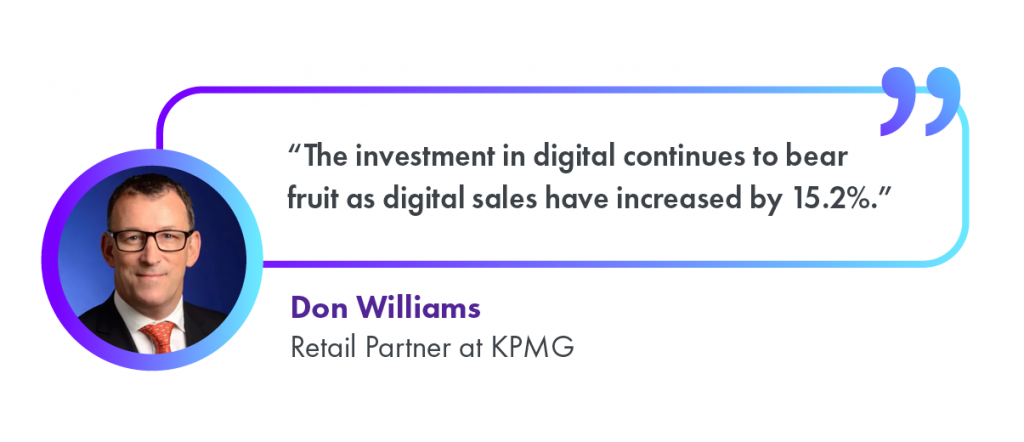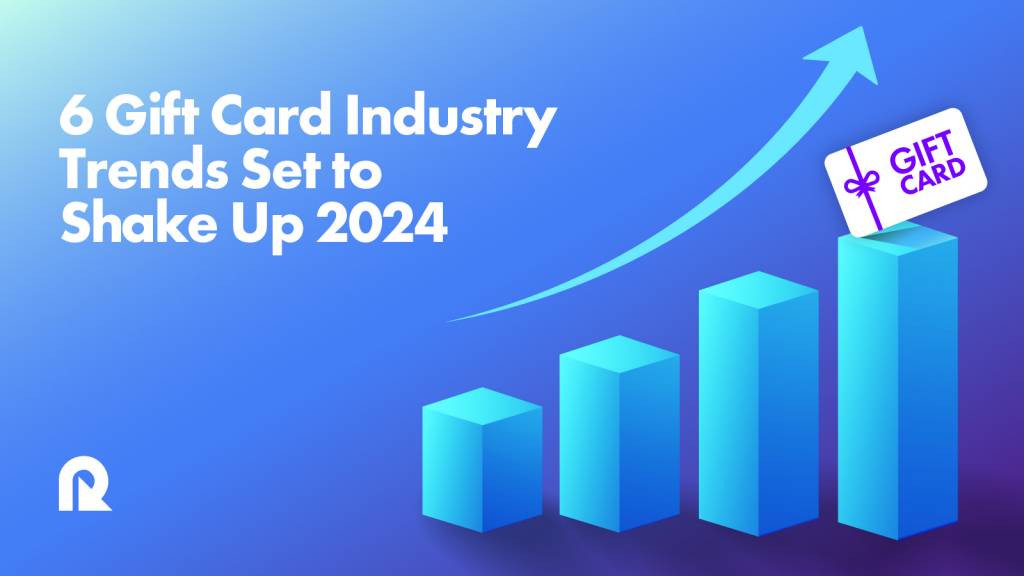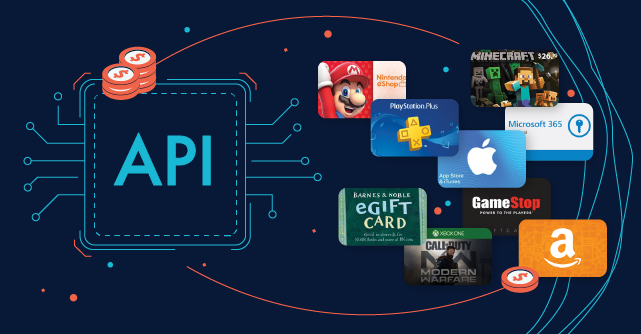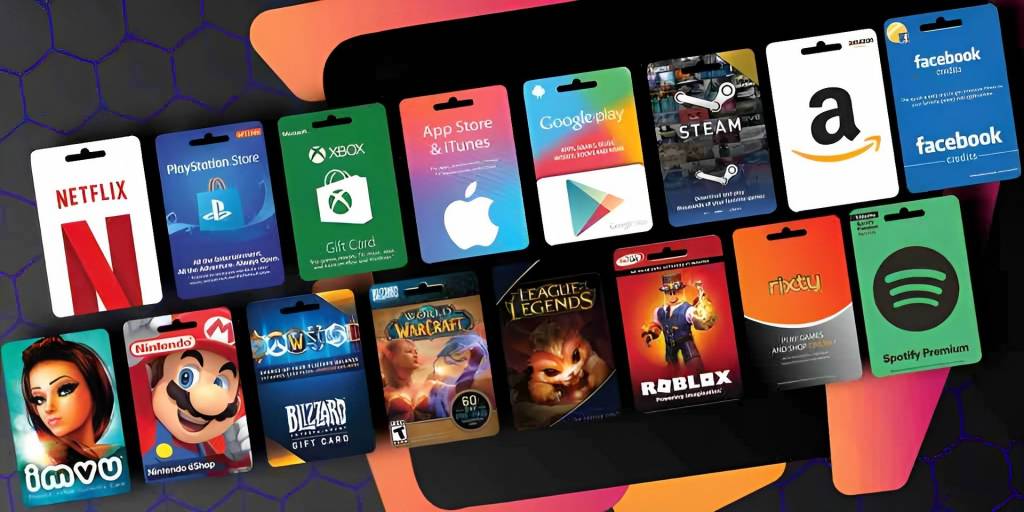What do the cost-of-living crisis, “Gen Z” consumers, and virtual vouchers all have in common?
Answer: they all influence the latest gift card trends, and every business offering a prepaid card program should bear them in mind as we approach 2024.
Keeping ahead of developments is easier said than done in a growing global gift card market set to hit a value of $843.11 billion by 2027, according to a market report by analysts Tecnavio.
What’s true right now may be yesterday’s news in a few short weeks.
Technological advancements, the threat of new entrants, and a competitive landscape make it imperative for businesses to stay on top of gift card trends, however, if they are to become major market players.
Here’s a look at some of the most important factors affecting the gift card market right now, and how businesses can adapt to them.
Want to upgrade your gift card program? Sign up for Reloadly and learn more about how our gift card API and easy plugin integration can a reliable long-term revenue stream for your business,
Are gift cards still popular?
Gift cards aren’t just popular, but they’re growing in demand across the world.
The gift card market grew by 10% in 2023 and is set to hit a combined annual growth rate (CAGR) of 12.87% toward 2027, according to the same Technavio research as above.
From Latin America to Australia, consumers are turning to gift cards more and more, both in-store and online.
The growing gift card market size (2022-2027)
Source: Technavio
Which gift card is the most popular?
The most popular gift cards vary region by region. What might attract consumers in China and South Korea, for example, is probably going to be quite different than in France or Germany, and different again in the Middle East.
Yet, suppliers looking to adapt their sales methodology to specific industries should still take note of long-term gift card market trends.
The rise of online shopping, for example, has meant e-commerce gift cards are still growing in popularity.
Certain customer preferences have also taken on a global importance. Closed-loop gift cards (those only valid at the host retailer), for example, are declining in popularity, with consumers preferring to spread their spending across multiple brands.
Research by consulting firm Blueweave has open-loop gift cards dominating the industry by 2026.
Source: Blueweave
People also seem to have more confidence in cards that come with the logo of a trusted financial provider, like Mastercard, Visa, and American Express.
Also, let’s not forget the power of using gift cards as staff incentives. Employers have consistently reported success in using them as perks to motivate staff to higher levels of performance.
Long-term trends can change, however. As 2024 approaches, let’s look ahead to the developments that will be impacting the industry over the next 12 months.
The 6 gift card trends set to shape the market in 2024
With 2023 coming to a close, gift card industry experts have started to carry out in-depth market research to forecast what lies in store for us in the new year.
Using 2024 as the forecast period, their findings have unearthed new market trends that we can expect to see soon. Let’s dive into them.
1. E-gift cards could overtake physical ones for the first time
We’ve known about the popularity of digital cards for some time, especially following an explosive rise in usage during lockdown.
Yet, 2024 could be the year we see them overtake physical gift cards for the first time.
Share analysis from KPMG has found that e-gift cards now claim a 48% market share and analysts expect it to be only a matter of time before they claim the top spot.
The reasons for this are well-documented, with consumers appreciating their convenience and that they can instantly add them to online accounts and mobile wallets.
The pandemic is thought to have accelerated this shift with users forced to use them instead of physical versions.
Don Williams, Retail Partner at KPMG, emphasized this by pointing out how egift sales have continued to hold up in the gift card sector, even after consumers have returned to stores
“The investment in digital continues to bear fruit as digital sales have increased by 15.2%,” Williams remarked. “As consumers increasingly shop across real word and digital channels, the industry must continue to invest in ensuring the customer experience is seamless across all platforms”

2. Gen Zers are hot on gift cards
Part of the rise in digital gift cards is down to the growth in use among young people, who are also more likely to buy physical gift cards than their older peers.
Younger generations planned to buy 70% more gift cards than older generations in the 2023 holiday season, according to research by Blackhawk Network (BHN).
This difference was particularly evident among “Gen Z” consumers (12 to 24 year-olds) who plan to spend 56% more on gift cards this year than in 2022.
Why? Well, apart from the immediacy and convenience of gift cards that Gen Zers can use at multiple brands (also known as open-loop gift cards), it’s thought that the cost-of-living crisis has made them love a good deal.
Gift cards that act as small perks, such as ‘buy one, get one free’ or freebie gift cards, are especially popular and encourage young people to both treat themselves and engage with a brand.
All the better if the host retailer has partnerships with other brands where consumers can redeem them.
For gift card retailers, it makes sense to adapt their special deals according to this market segmentation, but when’s the best time to offer them?
BHN research has a potential answer: later than usual. In 2023, more people from Gen Z to Boomers left their holiday shopping to November or December compared to in 2022, including 72% of under 25s.
3. Holiday seasons are more important than ever
More people forgoing their in-person holiday shopping could be one of the reasons behind a significant rise in festive gift card sales.
Shoppers planned to spend 43% of their total holiday budget on gift cards, according to BHN research, — up from 37% last year — and they typically buy many of them. The findings showed that older generations buy an average of 10 gift cards, while young shoppers accumulate an incredible 17 of them.
This highlights the importance of getting festive marketing campaigns just right. Even something seemingly trivial, like choosing the right gift card caption, can make a difference in sales.
Access to a wide range of suppliers is also key with people buying a variety of gift cards. This might include Walmart for Canada and US gift cards, or universal suppliers like Amazon.com, Inc, and Apple in Europe, Africa, and the Asia-Pacific region.
In a competitive market, a stellar festive gift card campaign can put a retailer on the map.
4. Users are happy to pay more for a sustainable card
Climate change has impacted every industry and it’s no different with gift card trends.
Sustainability concerns are continuing to gain traction among consumers, particularly millennials and Gen Z, who are willing to pay more for eco-friendly gift cards.
71% of Gen Z consumers stay loyal to brands who are transparent with their ESG principles, according to BHN research, with over half (51%) willing to pay more for a sustainable product. This is compared to 23% of Baby Boomers.
For retailers, upgrading sustainable practices within gift card programs is a strategic move. This includes eco-friendly packaging, supporting charitable causes, and reducing carbon footprints.
As mentioned, digital gift cards are on the rise partly thanks to their eco-friendly benefits. There are no material or distribution costs associated with e-gift cards, which also helps with carbon output.
Gift card retailers with clear and obvious green measures are surely more likely to outperform those without them as we head into 2024.
5. The cost-of-living crisis is influencing gift card types
The cost-of-living crisis has had a huge impact on the global market as consumers adapt their spending habits due to less disposable income.
The knock-on effects on gift card purchasing have been noticeable. Rather than cutting down, consumers have been adapting to tough economic conditions with their choices.
Gift cards for the leisure sector, for example, have seen a 16% market growth in 2023, according to research from analysts GCVA. This suggests that consumers are buying holiday and entertainment treats for their family and friends who have less money to spend on them.
But which gift card has the highest selling rate right now?
Well, the same research suggests grocery retailers are having the most success, with grocery gift vouchers experiencing a growth rate of 26%. Again, this hints at people supporting loved ones with essentials as well as employers who have provided staff with gift cards for necessities rather than luxuries.
With a recession predicted in North America for 2024, sticking to these sectors may prove a wise choice for retailers.
6. Gift card data is still an unmined resource
One of the big advantages of using a gift card program is the built-in data capabilities that they come with.
This data provides invaluable insights into gift card performance, showing retailers
market dynamics,, trends, and customer behavior. With this information, they can tweak their campaigns to get more exposure and sales.
Yet despite these advantages over half of gift card managers (54%) still don’t use data to manage their gift card program, according to statistics unveiled during the 2023 GCVA annual conference.
It opens up a huge market opportunity for retailers that can use this data to their benefit. Data allows them to deliver the personalized gift cards and loyalty programs that their customers are looking for, which will improve their chances of becoming key players in their market as we head into 2024.
[Are you ready to see how a gift card program can increase engagement and revenue? Sign up for Reloadly or contact us to learn more about how our digital gift card API lets you transfer gift cards all over the world.]



